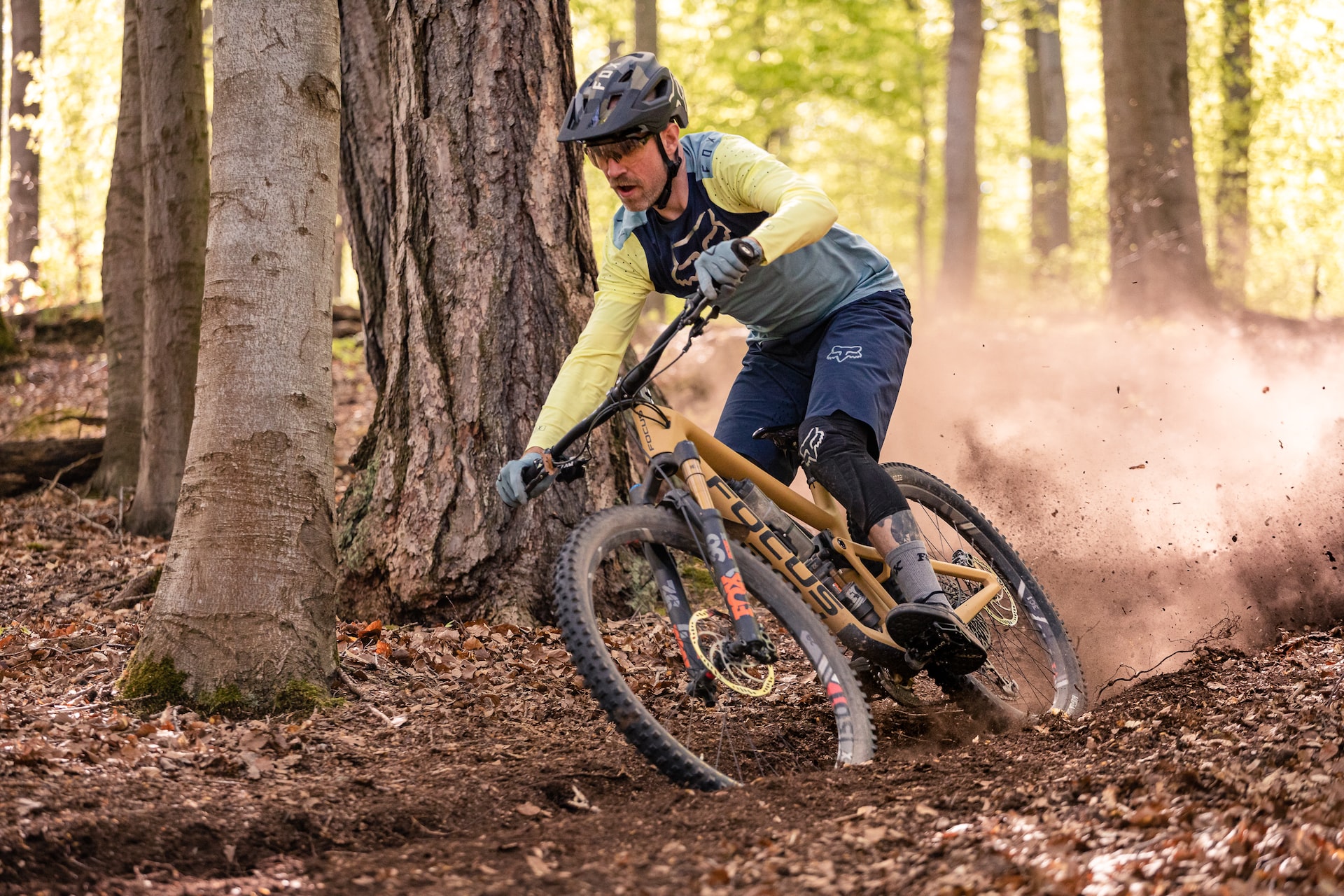Whether you’re a competitive equestrian or a casual rider, an effective training program is essential for any rider to reach their goals. A good training program will help you become more consistent, improve your technique, and strengthen relationships with your horse. The key to a successful program is planning, preparation, and consistency. With the proper guidance, you can create a unique program that will help you meet your riding goals safely and productively. This article will outline tips and strategies to help you set up a successful training program.
Identifying Your Riding Goals
A practical approach to reaching your riding goals starts with setting realistic goals. Before you begin creating a training program, take some time to sit down and thoughtfully consider what you want to achieve. Think about your riding over the past few months and decide how you want to measure your progress. Are you looking to increase your speed, decrease your time in the saddle, or increase your overall fitness level?
Writing down your goals can help ensure that you stick to them. Visualize the outcome of achieving your goals and use this to stay motivated. It is essential to keep track of your progress to stay motivated, so create a progress chart or journal where you can write down your progress over time.
Understanding Your Current Riding Ability
Before you start implementing a new training program, evaluate your current abilities. Knowing your fitness level, strengths, and weaknesses can help build a program that fits your needs. Consider the types of rides you usually do and the duration, terrain, and weather conditions. Knowing your current state will help you identify the areas that need improvement and, in turn, determine the type of riding and training that will be most effective for you.
Creating Your Training Program
When constructing your program, focus on specific riding skills and goals. Try to create a program tailored to your individual needs while still being achievable and enjoyable. Depending on your goals, your program could include interval training, hill rides, road rides, off-road rides, and recovery rides.
Start by adding just one or two rides per week and gradually increasing the intensity and length of each passage as you progress. Build up your rides to ensure that you are progressively strengthening your body. On top of your riding, include some strength and flexibility work and a few rest days. Aim for a balanced program that consists of a variety of different types of rides.
Measuring Your Progress
Tracking your progress is critical to staying motivated and achieving your goals. A detailed training log will help you identify areas for improvement and recognize your progress. Establishing measurable, achievable goals will help you keep focus. You can check your heart rate, power output, speed, and other metrics to track your progress.
Assessing Your Skill Level
When setting up an effective training program to help reach your riding goals, it’s essential to assess your current skill level. Before you begin any training program, you must take a step back and evaluate your current riding abilities. This will help you identify where your strengths and weaknesses lie so that you can create a program specifically designed to suit your needs.
Identifying Your Riding Goals
Before you can assess your skill level, you’ll need to identify your riding goals. What do you want to achieve? Do you want to become a better jumper, dressage rider, or all-rounder? Setting your goals ahead will help keep you focused and give you direction.
Evaluating Your Riding Knowledge
Once you have identified your goals, it’s time to evaluate your current riding knowledge. Do you have a good understanding of the fundamentals of riding? Are you comfortable with basic dressage movements? Are you familiar with how to properly care for a horse? Knowing the answers to these questions will help you determine where to focus your training.
Assessing Your Riding Ability
At this step, you’ll need to assess your current riding ability. Do you have the basics down? Are you comfortable with the movements required in your chosen discipline? Are you confident in the saddle and in control of your horse? This is a critical step in creating an effective training program.
Testing Your Riding Skills
Once you have identified your goals and evaluated your riding knowledge and ability, it’s time to test your skills. Take some time to practice the basics of your chosen discipline. Put yourself into different riding scenarios and see how you react. This will help you identify gaps in your riding knowledge that need to be filled.
Analyzing Your Weaknesses and Strengths
Once you have assessed your riding skills, you’ll need to analyze your weaknesses and strengths. Which areas need improvement? What can you do to become a better rider? By identifying your weaknesses, you’ll be able to tailor your training program to focus on the areas that need the most attention.
Seeking Professional Advice
Finally, seeking professional advice is vital when assessing your riding skills. A qualified riding coach or instructor can help you identify specific areas of improvement and provide valuable advice and guidance. Taking the time to consult an expert can make all the difference in helping you reach your riding goals.
Designing a Training Program
Creating a Realistic Training Program
Creating an effective training program that helps you reach your equestrian riding goals starts with setting realistic targets. It’s essential to have measurable goals and work towards them in manageable steps. Putting specific milestones and time frames to track progress will also help motivate you to keep up with your training program.
Identifying Areas to Improve
When designing your training program, focus on areas you want to improve. Identify activities to help you build the skills needed to accomplish those goals. For example, practice riding with dressage-specific techniques if you’re aiming for higher scores in dressage classes. If you want to jump higher, focus on exercises that build strength and agility in your horse.
Incorporating Variety
A successful training program also includes variety. Incorporate exercises and activities that not only target your specific goals but also help prevent boredom and keep you and your horse engaged and motivated. These activities may include trail rides, varied jumping courses, and different exercises on different terrain.
Seeking Professional Help
Although there are plenty of online resources and tutorials to help you implement an effective equestrian training program, creating a customized and tailored plan requires the help of a professional. Qualified riding and horsemanship instructors can assess your horse’s skills and needs and create a tailored program to help you reach your goals. Experienced professionals can also provide feedback and critiques to help you evaluate and adjust your training.
Recording Progress
To keep track of your progress, record your rides and activities consistently. This will also allow you to reflect on what is and is not working. Take notes on difficulties you and your horse encounter and any areas that need further practice. Recording your progress will help you make necessary adjustments and stay on track with your training.
Evaluating Performance
Regularly evaluate your performance in comparison to your initial goals. Determine if your training program is helping you progress and reach your goals. If not, make the necessary changes to get your training back on track.
Maintaining Consistency
Lastly, remember to be consistent. Stick to your plan, and don’t get discouraged when you encounter obstacles or results that don’t arrive as quickly as you’d like. As long as you remain consistent and focused on your goals, your training program will help you reach them.
Incorporating Mental Training
Creating an effective training program to help you reach your riding goals is not just about physical training. It’s essential to understand the power of mental conditioning, too. Mental training can help you stay focused and motivated, so you can effectively incorporate it into your riding program.
Developing A Mental Training Regimen
A mental training regimen should be an essential part of your riding program. It can help you develop positive attitudes and beliefs about riding, and it also helps you become more aware of your feelings and emotions. It’s essential to take the time to reflect on what mental training activities you can do to improve your riding.
Creating A Plan For Mental Training
The first step in creating a plan for mental training is to identify the areas where mental training can help you improve your riding. These could include visualizing the course, setting riding goals, or developing specific riding strategies. Once you’ve identified these areas, you can create a plan for mental training activities.
Implementing Mental Training Activities
Once you’ve created a mental training plan, you must start implementing the activities. This includes setting aside time for mental training every day, scheduling specific mental training activities, and setting goals for each activity. It’s also important to keep track of your progress and celebrate each victory.
Practicing Mental Imagery
Mental imagery is a powerful tool for riders. It’s a way to visualize the course, your performance, and your goals. To do this, take a few moments each day to close your eyes and imagine yourself at the competition. What will you look like? How will you approach the competition? Practice this exercise several times a week to become comfortable and confident.
Seeking Professional Help
If you are having difficulty incorporating mental training into your riding program, it may be helpful to seek professional help. Mental training coaches can help you create a plan for cognitive training and give you techniques to help you stay focused and motivated. Professional service can also be incredibly beneficial as you progress and become more successful as a rider.
Developing Self-Awareness
The final element of mental training is developing self-awareness. As you implement your mental training activities, be mindful of your thoughts, feelings, and emotions. Spend time reflecting on your successes, failures, and the overall progress you are making. This will help you become aware of your inner state, which can then help you develop positive attitudes and beliefs about riding.
Developing an effective training program to help you reach your riding goals requires incorporating mental and physical training. Understanding the power of mental conditioning, creating a mental training plan, implementing mental training activities, and developing self-awareness is necessary to establish an effective training program.
Practicing Regularly
Developing a successful training program for riding goals begins with creating an effective practice plan. A practice plan should be tailored to your specific riding goals and account for the time you are willing to spend practicing. As you set up your practice plan, break down the necessary skills into smaller goals and track your progress over time.
Structuring Your Training
When crafting your practice plan, you can further structure it by creating goals for each practice session. These goals should be short and achievable, helping to keep you focused on a particular skill. Be sure to schedule enough practice time each session to allow yourself to properly work on each goal and make mistakes along the way.
Developing Endurance
As you work through each practice session, a vital part of any successful training program is building up your endurance. This can be accomplished through regular practice, including working on your physical and mental endurance. Building up your physical and mental strength will help you stay focused as you reach your riding goals.
Mixing Up Your Practice
When developing your practice plan, incorporate various activities and exercises to keep yourself from getting bored. Mix up the types of activities you do each session, such as varying the speed and difficulty of each movement. This will help keep you motivated and help you to stay focused on your riding goals.
Making Adjustments
As you progress through your practice plan, making adjustments and tweaking your plan as needed is crucial. If a particular exercise or goal proves difficult, adjust the difficulty or switch up the routine to one better suited for your skill level. Keeping an open mind and being willing to make changes can help you stay on track and reach your riding goals.
Monitoring Your Progress
Understanding your current skills and strengths is a critical part of developing an effective training plan. Regularly measuring your progress is vital to practical goal setting. It would help if you used qualitative and quantitative assessment methods to track your development in riding.
Being Objective
It’s important to remain objective when analyzing your performance. Try to measure your progress throughout several rides rather than focus on single-ride results. Regularly assessing your progress allows you to identify areas for further improvement and to stay motivated to reach your goals.
Using Metrics
By taking note of the times for each of your rides and noting how you’re feeling when out riding, you’ll be able to track your progress more precisely. For more objective measurements, use an electronic device such as a GPS to track your speed, distance, elevation, etc., over each ride.
Creating A Log
Creating a ride log will help you identify patterns and trends in your performance. Use this log to establish a baseline for comparison and record your progress over each ride. This can be done using a simple spreadsheet or an app specifically designed for tracking exercise progress.
Taking Note of your Wins
Desire to improve is an integral part of reaching your riding goals – but make sure to take the time to recognize your achievements too. Celebrating your successes, no matter how small, will help to motivate you to keep up your training efforts.
Achieving Maximum Benefits from an Effective Training Program
An effective training program is essential for any serious rider to maximize their riding skills’ potential. A well-thought-out program tailored to your riding goals will maximize the efficiency of your training time, keep you motivated, and help you achieve the best results possible. A successful training program will include various activities like strength training, stretching, and drills. Cross-training with other sports can also help to improve your overall fitness. With a commitment to your plan and a dedication to hard work, you will be able to reach all your riding goals.






Leave a reply